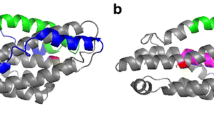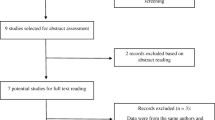Abstract
In Alzheimer’s disease patients (AD), the age at onset (AAO) ranges from 40 to 90. Usually, AD patients who develop symptoms before the age of 65 are classified as early onset (EO). The best known genetic risk factor for AD is the ε4 allele of the apolipoprotein E (APOE). In this study, 474 subjects with AD were consecutively recruited in the memory clinic of the Santa Lucia Foundation in Rome. The best fitting model for the discrimination between EO and late onset (LO) was chosen based on lowest value of the Bayesian Information Criterion, which suggests the theoretical model with minimal deviation from the empirical distribution function of AAO in our sample. The FMM was used to compare EO and LO groups with respect to the following demographic and clinical variables: gender, age, education, MMSE and NPI. Furthermore a quantitative assessment of ADL and IADL was performed. Finally, the frequency of the APOE ε4 allele was compared in EO and LO groups. Using the admixture analysis, we established that the AAO discriminating EO from LO-AD was 63–64. Higher education was associated with earlier onset in the EO but not in LO, and duration of illness was associated with earlier onset only in LO. The ε4 allele was associated with later onset in EO but earlier onset in LO. Finally, increased impairment in ADL, IADL and NPI was associated with later onset only in the LO subgroup. Thus, the ε4 allele of the APOE gene was significantly associated with both EO and LO distributions but with opposite effect, suggesting genetic heterogeneity. Additional studies are needed to further clarify the genetic mechanisms differentiating EO- and LO-AD.



Similar content being viewed by others
Abbreviations
- AAO:
-
Age at onset
- AD:
-
Alzheimer’s disease
- ADL:
-
Activities of daily living
- APOE:
-
Apolipoprotein E
- AIC:
-
Akaike information criterion
- BIC:
-
Bayesian information criterion
- CDR:
-
Dementia rating scale
- DSM-IV:
-
Diagnostic and statistical manual IV
- EO-AD:
-
Early-onset Alzheimer’s disease
- ε4:
-
Epsilon4 allele
- FMM:
-
Finite mixture model
- IADL:
-
Instrumental activities of daily living
- IRCCS:
-
Istituto Di Ricovero e Cura a Carattere Scientifico (Italian Research Hospital)
- LO-AD:
-
Late-onset Alzheimer’s disease
- MMSE:
-
Mini-mental status examination
- MRI:
-
Magnetic resonance imaging
- NINCDS–ADRDA:
-
National Institute of Neurological and Communicative Disorders and Stroke and the Alzheimer’s Disease and Related Disorders Association
- NPI:
-
Neuropsychiatric inventory
- PSEN1:
-
Presenilin 1
- PSEN2:
-
Presenilin 2
References
APA (2000) Diagnostic and statistical manual of mental disorder, DSM-IV-TR. Washington. http://www.apa.org/
Bird TD (2008) Genetic aspects of Alzheimer disease. Genet Med 10:231–239
Blennow K, de Leon MJ, Zetterberg H (2006) Alzheimer’s disease. Lancet 368(9533):387–403
Corder EH, Saunders AM, Risch NJ, Strittmatter WJ, Schmechel DE, Gaskell PC Jr, Rimmler JB, Locke PA, Conneally PM, Schmader KE et al (1994) Protective effect of apolipoprotein E type 2 allele for late onset Alzheimer disease. Nat Genet 7(2):180–184
Cummings JL (1997) The Neuropsychiatric Inventory: assessing psychopathology in dementia patients. Neurology. 48(5 Suppl 6):S10–S16
Davidson Y, Gibbons L, Pritchard A, Hardicre J, Wren J, Stopford C, Julien C, Thompson J, Payton A, Pickering-Brown SM, Pendleton N, Horan MA, Burns A, Purandare N, Lendon CL, Neary D, Snowden JS, Mann DM (2007) Apolipoprotein E epsilon4 allele frequency and age at onset of Alzheimer’s disease. Dement Geriatr Cogn Disord 23(1):60–66
Deb P, Gallo WT, Ayyagari P, Fletcher JM, Sindelar JL (2011) The effect of job loss on overweight and drinking. J Health Econ 30(2):317–327
Delorme R, Golmard JL, Chabane N, Millet B, Krebs MO, Mouren-Simeoni MC, Leboyer M (2005) Admixture analysis of age at onset in obsessive-compulsive disorder. Psychol Med 35(2):237–243
de Oliveira FF, Bertolucci PH, Chen ES, Smith MC (2014) Assessment of risk factors for earlier onset of sporadic Alzheimer’s disease dementia. Neurol India 62(6):625
Folstein MF, Folstein SE, McHugh PR (1975) ‟Mini-mental state”. A practical method for grading the cognitive state of patients for the clinician. J Psychiatr Res 12(3):189–198
Fraley C, Raftery AE (1999) MCLUST: software for model-based cluster analysis. J Classif 16(2):297–306
Fraley C, Raftery AE (2003) Enhanced model-based clustering, density estimation, and discriminant analysis software: MCLUST. J Classif 20(2):263–286
Freudenberg-Hua Y, Freudenberg J, Vacic V, Abhyankar A, Emde AK, Ben-Avraham D, Barzilai N, Oschwald D, Christen E, Koppel J, Greenwald B, Darnell RB, Germer S, Atzmon G, Davies P (2014) Disease variants in genomes of 44 centenarians. Mol Genet Genomic Med. 2(5):438–450
Gureje O, Ogunniyi A, Baiyewu O, Price B, Unverzagt FW, Evans RM, Smith-Gamble V, Lane KA, Gao S, Hall KS, Hendrie HC, Murrell JR (2006) APOE ε4 is not associated with Alzheimer’s disease in elderly Nigerians. Ann Neurol 59(1):182–185
Hall K, Murrell J, Ogunniyi A, Deeg M, Baiyewu O, Gao S, Gureje O, Dickens J, Evans R, Smith-Gamble V, Unverzagt FW, Shen J, Hendrie H (2006) Cholesterol, APOE genotype, and Alzheimer disease: an epidemiologic study of Nigerian Yoruba. Neurology 66(2):223–227
Hamshere ML, Gordon-Smith K, Forty L, Jones L, Caesar S, Fraser C, Hyde S, Tredget J, Kirov G, Jones I, Craddock N, Smith DJ (2009) Age-at- onset in bipolar-I disorder: mixture analysis of 1369 cases identifies three distinct clinical sub-groups. J Affect Disord 116:23–29
Jack CR Jr, Wiste HJ, Weigand SD, Knopman DS, Vemuri P, Mielke MM, Lowe V, Senjem ML, Gunter JL, Machulda MM, Gregg BE, Pankratz VS, Rocca WA, Petersen RC (2015) Age, sex, and APOE ε4 effects on memory, brain structure, and β-amyloid across the adult life span. JAMA Neurol 72(5):511–519
Jun G, Ibrahim-Verbaas CA, Vronskaya M, Lambert JC, et al (2015) A novel Alzheimer disease locus located near the gene encoding tau protein. Mol Psychiatry. doi: 10.1038/mp.2015.23. (Epub ahead of print)
Lambert JC, Ibrahim-Verbaas CA, Harold D, Naj AC, Sims R, Bellenguez C et al (2013) Meta-analysis of 74,046 individuals identifies 11 new susceptibility loci for Alzheimer’s disease. Nat Genet 45(12):1452–1458
Licht EA, McMurtray AM, Saul RE, Mendez MF (2007) Cognitive differences between early- and late-onset Alzheimer’s disease. Am J Alzheimer’s Dis Other Dement 22:218–222
Mahley RW, Weisgraber KH, Huang Y (2006) Apolipoprotein Ε4: a causative factor and therapeutic target in neuropathology, including Alzheimer’s disease. Proc Natl Acad Sci UA 103(15):5644–5651
Ortiz A, Bradler K, Slaney C, Garnham J, Ruzickova M, O’Donovan C, Hajek T, Alda M (2011) An admixture analysis of the age at index episodes in bipolar disorder. Psychiatry Res 188(1):34–39
Panariello F, O’Driscoll L, De Souza RP, Manchia AM, Kennedy J, De Luca V (2010) Age at onset in Canadian schizophrenia patients: admixture analysis. Schizophr Res 122:278–279
Raux G, Guyant-Maréchal L, Martin C, Bou J, Penet C, Brice A, Hannequin D, Frebourg T, Campion D (2005) Molecular diagnosis of autosomal dominant early onset Alzheimer’s disease: an update. J Med Genet 42(10):793–795 Epub 2005 Jul 20
Reitz C, Brayne C, Mayeux R (2011) Epidemiology of Alzheimer disease, nature reviews. Neurology 7(137–152):2
Sando SB, Melquist S, Cannon A, Hutton ML, Sletvold O, Saltvedt I, White LR, Lydersen S, Aasly JO (2008) APOE epsilon 4 lowers age at onset and is a high risk factor for Alzheimer's disease; a case control study from central Norway. BMC Neurol 8:9. doi:10.1186/1471-2377-8-9
Small BJ, Graves AB, McEvoy CL, Crawford FC, Mullan M, Mortimer JA (2000) Is APOE-epsilon4 a risk factor for cognitive impairment in normal aging? Neurology 54:2082–2088
Smits LL, Pijnenburg YA, van der Vlies AE, Koedam EL, Bouwman FH, Reuling IE, Scheltens P, van der Flier WM (2015) Early onset APOE Ε4-negative Alzheimer’s disease patients show faster cognitive decline on non-memory domains. Eur Neuropsychopharmacol 25(7):1010–1017
Sherrington R, Rogaev EI, Liang Y, Rogaeva EA, Levesque G, Ikeda M, Chi H, Lin C, Li G, Holman K, Tsuda T, Mar L, Foncin JF, Bruni AC, Montesi MP, Sorbi S, Rainero I, Pinessi L, Nee L, Chumakov I, Pollen D, Brookes A, Sanseau P, Polinsky RJ, Wasco W, Da Silva HA, Haines JL, Perkicak-Vance MA, Tanzi RE, Roses AD, Fraser PE, Rommens JM (1995) St George-Hyslop PH. Cloning of a gene bearing missense mutations in early-onset familial Alzheimer’s disease. Nature 375(6534):754–760
Strittmatter WJ (1993) Apolipoprotein E: high-avidity binding to beta-amyloid and increased frequency of type 4 allele in late-onset familial Alzheimer disease. Proc Natl Acad Sci USA 90(5):1977–1981
Tibi L, van Oppen P, Aderka IM et al (2015) An admixture analysis of age of onset in agoraphobia. J Affect Disord 180:112–115
Toyota Y, Ikeda M, Shinagawa S, Matsumoto T, Matsumoto N, Hokoishi K, Fukuhara R, Ishikawa T, Mori T, Adachi H, Komori K, Tanabe H (2007) Comparison of behavioral and psychological symptoms in early-onset and late-onset Alzheimer’s disease. Int J Geriatr Psychiatry 22:896–901
Van der Flier WM, Pijnenburg YA, Fox NC, Scheltens P (2010) Early-onset versus late-onset Alzheimer’s disease: the case of the missing APOE varepsilon4 allele. Lancet Neurol 10:280–288
Van der Vlies AE, Koedam EL, Pijnenburg YA, Twisk JW, Scheltens P, Van der Flier WM (2009) Most rapid cognitive decline in APOE epsilon4 negative Alzheimer’s disease with early onset. Psychol Med 39:1907–1911 34.
Author information
Authors and Affiliations
Corresponding author
Ethics declarations
Conflict of interest
None.
Rights and permissions
About this article
Cite this article
De Luca, V., Orfei, M.D., Gaudenzi, S. et al. Inverse effect of the APOE epsilon4 allele in late- and early-onset Alzheimer’s disease. Eur Arch Psychiatry Clin Neurosci 266, 599–606 (2016). https://doi.org/10.1007/s00406-015-0663-4
Received:
Accepted:
Published:
Issue Date:
DOI: https://doi.org/10.1007/s00406-015-0663-4




